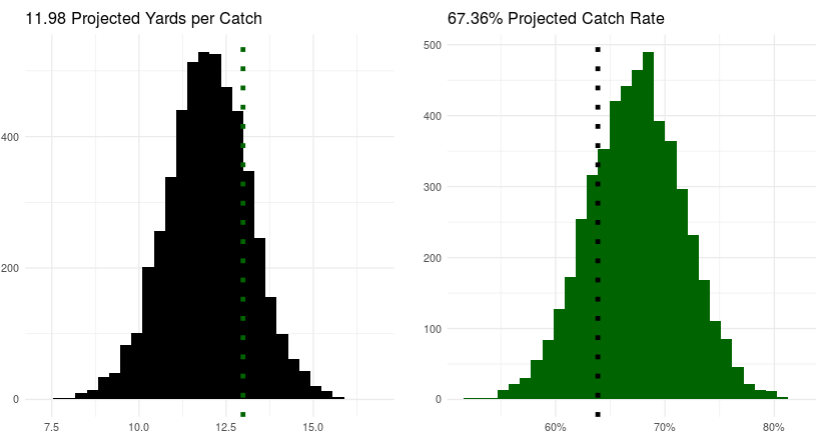In a 2020 college football season that was unlike any we’ve ever seen, one player caught our collective attention.
The national champion Alabama Crimson Tide, loaded with talent from top to bottom, lost Jaylen Waddle to a broken leg during the middle of the season, leaving them without a player many believed to be their top target. But in Waddle's absence, senior wide receiver DeVonta Smith blew up in 2020.
Smith, the 2020 Heisman Trophy winner, caught 117-of-145 targets for over 1,850 yards and 23 touchdowns. He was the fourth-most-valuable player in all of college football in 2020 and the most valuable non-quarterback we’ve ever charted.
Our current big board has Smith as the eighth-best prospect for the 2021 NFL Draft, behind Ja'Marr Chase of LSU and teammate Jaylen Waddle. Smith, at 6-foot-1 and just over 170 pounds, will elicit question marks about his size, but size is less of a concern when you can separate the way Smith does, and he separates about as well as anyone in college football during the PFF College era. Smith recorded almost 500 more yards with a separation designation of “open,” “step” or “wide open” than any other player in college football in 2020.
[Editor's Note: PFF's new college-to-pro projection system is powered by AWS machine learning capabilities.]
Our college-to-pro system takes data from a player’s entire college football career, weighs it by how difficult their schedule was, how difficult their circumstances were and how we think he’ll be deployed at the NFL level. It’s the system we use to build our analytics mock and produce comps that are less narrative-driven and more statistically driven.
The hard part about projecting wide receivers, especially in January, is that we don’t have any testing data for these players. Henry Ruggs III was the first wide receiver taken in last April’s draft in large part due to how he tested in Indianapolis.
The uncertainty as to how we’re going to get these measurements in 2021 aside, we are left guessing right now at anything other than height or weight. The second (and larger) source of uncertainty is how much quarterback ability and usage affect a wide receiver’s projections. Yardage after the catch (YAC) is a very unpredictable, unstable thing, so you’re basically projecting average depth of target, which is king. Thus, I assumed that Smith was a 60th-percentile athlete (taking into account his lack of size) and ran some projections based on different usages.
How Smith projects as a receiver
In the context-free framework — where we assume that Smith’s target structure is the same in the NFL as it was in Alabama — Smith’s median yards per target ranks first among wide receivers in his class (8.1). That said, his projection is only 0.05 away from Ja'Marr Chase, who many expect to be selected first, though it's about a quarter of a yard higher than the projection we have for Jaylen Waddle.
However, this isn’t necessarily a good way to look at it since a player’s situation, especially at the receiver position, dictates so much in the NFL. Hence we look at different situations.
First, we projected Smith in a situation where most of his targets were quick and short, and his statistical comps were players like Tyler Boyd (who has almost 3,000 yards the last three years), Christian Kirk and Sterling Shepard. If he were an outlier YAC-producer like Golden Tate, these would likely be more impressive, but given the difficult nature of predicting YAC, these are relatively modest comps.

Exclusive content for premium subscribers

WANT TO KEEP READING?
Dominate Fantasy Football & Betting with AI-Powered Data & Tools Trusted By All 32 Teams
Already have a subscription? Log in



 © 2025 PFF - all rights reserved.
© 2025 PFF - all rights reserved.